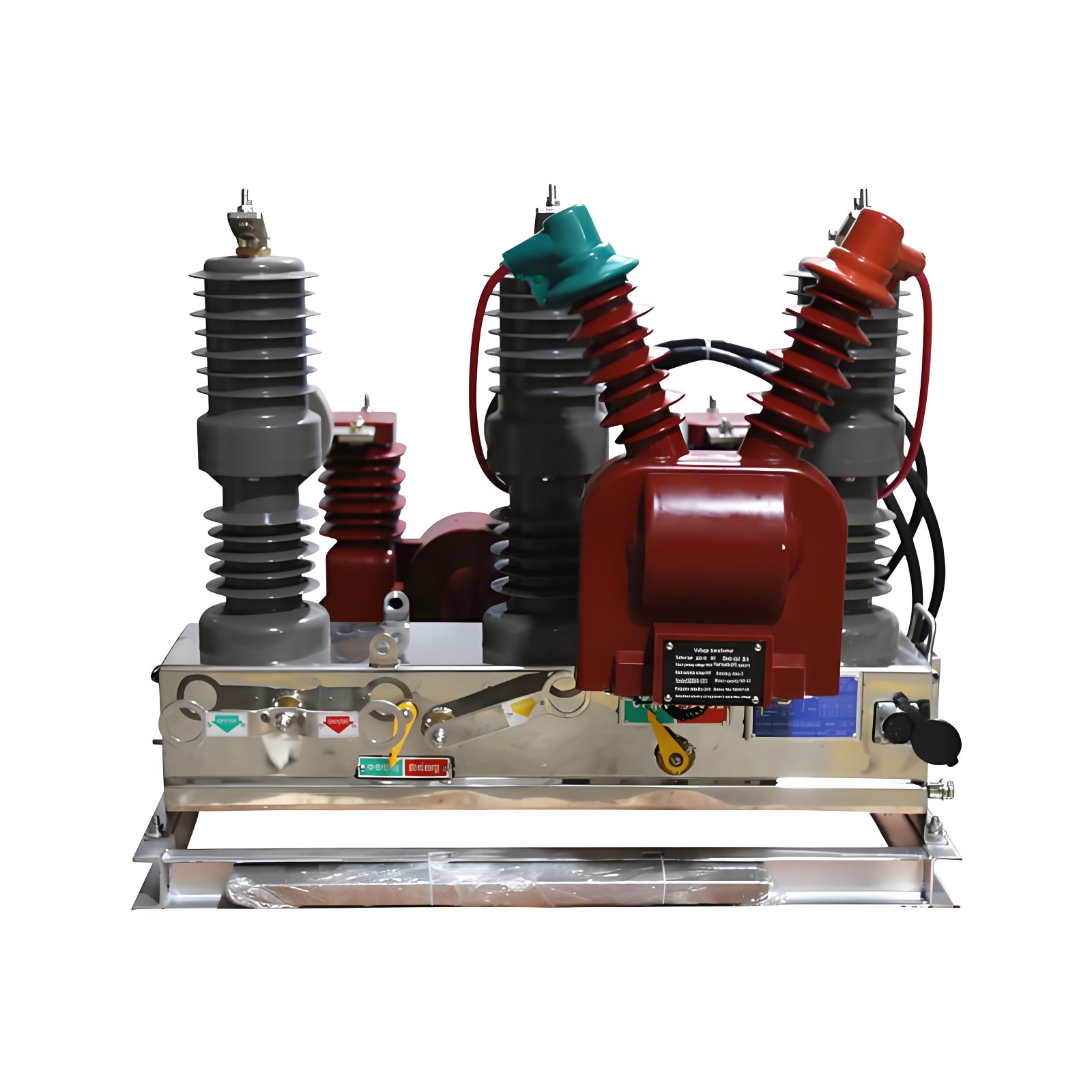Introduction to Vacuum Circuit Breaker
A vacuum circuit breaker is a type of circuit breaker that uses vacuum as the arc extinguishing medium. It is widely used in medium-voltage power systems because of its high reliability, long lifespan, and minimal maintenance requirements. The Vacuum circuit breaker operates efficiently by interrupting current flow when a fault occurs, protecting electrical systems from damage. Unlike traditional circuit breakers that rely on gas or oil, a vacuum circuit breaker provides superior insulation and safety performance due to the absence of ionizable gases.
Construction of a Vacuum Circuit Breaker
The vacuum circuit breaker consists of key components that work together to ensure reliable operation. These include the vacuum interrupter, operating mechanism, arc shield, contact system, and insulating housing. The vacuum interrupter is the core part of the vacuum circuit breaker, where the arc is extinguished. The contacts inside the interrupter open and close to control current flow. When they separate, an electric arc forms, which is quickly extinguished in the vacuum. The operating mechanism ensures that the contacts move rapidly and consistently. The outer insulating housing of the vacuum circuit breaker provides electrical insulation and mechanical protection.
Working Principle of a Vacuum Circuit Breaker
The vacuum circuit breaker operates on the principle of arc extinction in a vacuum. When a fault occurs in the electrical system, the breaker detects the abnormal current. The operating mechanism triggers the separation of contacts inside the vacuum interrupter. As the contacts part, an arc forms between them due to ionization of metal vapors. However, because the medium is a vacuum, the arc quickly collapses, and current flow stops almost instantly. This rapid interruption capability makes the vacuum circuit breaker highly efficient and reliable. Once the fault is cleared, the contacts close again, allowing normal current flow.
Arc Formation and Extinction Process in a Vacuum Circuit Breaker
When the contacts of a vacuum circuit breaker separate, the current continues to flow through the vaporized metal particles released from the contact surfaces. This creates a short-duration arc. Since a vacuum has an extremely low pressure and no gas molecules, the arc cannot sustain itself for long. The arc is quickly extinguished as the metal vapor condenses back on the contact surfaces. The result is a clean and fast interruption with minimal contact erosion. This arc extinction process is what gives the vacuum circuit breaker its long operational life and reliability in high-voltage applications.
Types of Operating Mechanisms in a Vacuum Circuit Breaker
The vacuum circuit breaker can use different types of operating mechanisms based on its application and design. Common mechanisms include spring-operated, magnetic-actuated, and motor-charged mechanisms. In spring-operated vacuum circuit breakers, a mechanical spring provides the energy needed to open and close the contacts. Magnetic-actuated vacuum circuit breakers use an electromagnetic coil to operate the mechanism, offering faster response and reduced maintenance. Motor-charged mechanisms automatically recharge the spring after each operation, ensuring readiness for the next cycle. Each mechanism ensures reliable movement of contacts, contributing to the efficient operation of the vacuum circuit breaker.
Advantages of a Vacuum Circuit Breaker
A vacuum circuit breaker offers numerous advantages over traditional types. It has high dielectric strength, fast arc extinction, and excellent reliability. Because the arc is extinguished in a vacuum, there is no risk of fire or gas contamination. The vacuum circuit breaker also requires minimal maintenance, as there are no gases to refill or oil to replace. Its compact design allows for easy installation in modern switchgear systems. Furthermore, the vacuum circuit breaker can operate efficiently under a wide range of environmental conditions, making it ideal for industrial, commercial, and utility applications.
Applications of Vacuum Circuit Breaker
The vacuum circuit breaker is extensively used in power distribution systems, substations, and industrial plants. It is suitable for medium-voltage applications ranging from 3.3 kV to 36 kV. Industries such as mining, manufacturing, and transportation use vacuum circuit breakers to protect electrical equipment and maintain system stability. Utilities also rely on the vacuum circuit breaker for its reliability in protecting transformers, feeders, and generators. Its ability to interrupt high fault currents quickly and safely makes it a preferred choice for both indoor and outdoor switchgear systems.
Maintenance of a Vacuum Circuit Breaker
Maintenance of a vacuum circuit breaker is simple and cost-effective. Regular inspection includes checking contact wear, verifying insulation resistance, and ensuring that the operating mechanism functions properly. Since the arc occurs in a sealed vacuum chamber, internal components experience minimal wear and tear. As a result, a vacuum circuit breaker can operate for years without needing major repairs. Periodic mechanical testing ensures that the spring or magnetic mechanism remains responsive. Proper maintenance enhances the operational life and ensures safe functioning of the vacuum circuit breaker in all conditions.
Comparison with Other Circuit Breakers
Compared to air, oil, or SF6 circuit breakers, the vacuum circuit breaker offers superior performance in many aspects. It has a faster arc extinction process, lower maintenance costs, and a more environmentally friendly design. Unlike SF6 circuit breakers that release greenhouse gases, the vacuum circuit breaker operates without harmful emissions. Oil circuit breakers require regular oil replacement, while air circuit breakers suffer from lower dielectric strength. The vacuum circuit breaker combines high efficiency with sustainability, making it the ideal choice for modern power systems.
Conclusion
The vacuum circuit breaker plays a critical role in ensuring the safety and reliability of electrical power systems. Its unique operating mechanism, based on vacuum arc extinction, provides fast and efficient fault interruption. With advantages such as minimal maintenance, environmental safety, and long service life, the vacuum circuit breaker has become the standard solution for medium-voltage protection. Understanding its construction and operating principles helps engineers and technicians maintain optimal performance in various applications. The vacuum circuit breaker continues to evolve with advancements in design and technology, ensuring a safer and more efficient electrical future.



